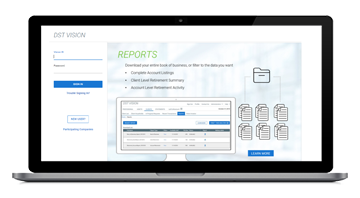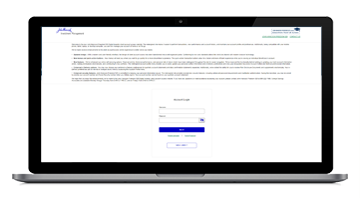Managing today’s market risks with liquid alternatives
In today’s market, investors face growing uncertainties affecting both traditional equity and bond investments. As they seek diversifying strategies to balance these challenges, liquid alternatives can serve as a tool to help mitigate risk and enhance portfolio resilience in today's uncertain market.

2025 has been a strong year for both equities and bonds. Stocks have rallied strongly since April, and bonds have delivered mid-single-digit returns since the start of the year.
Despite these gains, investors still face significant uncertainty. Shifts in government policy, geopolitical tensions, tariffs, inflation, and a softening job market are all worries facing investors moving forward.
We highlight three key concerns likely to influence markets in the months ahead.
1 Government spending
Government spending continues to increase, raising concerns about its impact on the bond market. The Congressional Budget Office projects spending will reach $7.02 trillion in 2025 (23.3% of GDP) and climb to nearly $11 trillion by 2035. The One Big Beautiful Bill Act, signed by the Trump administration on July 4, is expected to increase deficits by $3.4 trillion by 2034.
U.S. government spending outlook
The debt-to-GDP ratio now exceeds 120%, surpassing the World War II peak. This raises credit risk concerns and may push yields higher as investors demand more compensation, increasing borrowing costs and straining government finances.
Governments typically issue more bonds to cover deficits; however, weak demand can drive up yields on new bonds and devalue existing ones. Historically, bond yields have responded more to monetary policy than to spending levels; however, a recent increase in issuance and soft demand have lifted yields, as reflected in an increase in longer-term U.S. Treasury yields.
If this trend persists, bond values may fall, prompting investors to reassess the role of bonds in diversified portfolios—especially amid volatile equity markets.
2 Inflation
For over a decade, global investors operated under the assumption that inflation would remain subdued, anchored below 2.0%—a belief reinforced by central bank credibility and structural disinflationary forces like globalization and technological deflation. However, the postpandemic world has ushered in a new regime where inflation risks are structurally higher.
Driving this regime shift are several factors. Globally, monetary policy is easing as fiscal spending accelerates. In the United States, the U.S. Federal Reserve (Fed) is preparing to pivot toward monetary stimulus despite no clear economic shock. This two-pronged stimulus is happening at a time when inflation has bottomed at levels above the Fed’s 2.0% target. As of this writing, core CPI stands at 3.1%.
The long-term inflation and interest rate correlation
Additionally, deglobalization is reversing decades of supply chain optimization. Rising trade barriers like tariffs, reshoring initiatives, and geopolitical fragmentation are all inherently inflationary.
Finally, thematic trends such as the AI infrastructure buildout and an increase in defense spending amid rising geopolitical tensions represent long-term shifts in fiscal priorities and industrial demand, both of which are inflationary.
During periods of heightened inflation, equities and bonds can face simultaneous challenges, limiting their correlation benefit, as investors experienced in late 2021 through 2022 with global equities falling over 26%, while global bonds fell over 22%.1
3 Elevated valuations
While this year’s stock market rally has supported the story of the continued resilience of the U.S. market, we believe valuations are inflated currently. The forward 12-month price-to-earnings (P/E) ratio for the S&P 500 Index reached 22.5 as of September 12, edging closer to the peak P/E ratio of 24.1 recorded in December 1999 during the tech bubble.
Valuation of S&P 500 Index companies
12-month forward P/E nears 1999 tech bubble highs
At these levels, equities look expensive, offering limited upside from valuation expansion. While valuation isn’t a reliable timing tool, elevated multiples reduce the potential for capital appreciation.
Within fixed income, investment grade and high yield credit spreads—which serve as a measure of bond valuation—sit near their tightest levels since the late 1990s. Investors may still earn attractive returns from yield, but spread compression offers little room for further gains. This dynamic heightens the risk for both equity and bond investors, especially if the economy weakens.
Diversification through liquid alts
As traditional assets face growing market uncertainty, diversification remains essential. Today’s environment presents a clear opportunity to incorporate liquid alternatives—strategies designed to reduce exposure to equity and interest rate risks while helping limit portfolio drawdowns. These strategies apply hedge fund-like techniques but offer the accessibility and liquidity of mutual funds and ETFs.
Liquid alternatives are potentially less sensitive to interest rate shifts, rising inflation, and elevated valuations. They offer distinct risk/return profiles and the potential for uncorrelated performance relative to traditional assets, helping investors reduce portfolio volatility and preserve capital across varying market conditions.
Integrating liquid alternatives into a portfolio can enhance diversification and better position investors to navigate today’s complex financial landscape. While maintaining exposure to traditional assets, these strategies provide a way to strengthen investment approaches.
Because different alternative strategies carry varied investment characteristics, both relative to each other and over time, maintaining diversified exposure across alternatives—such as long/short equity, market neutral, or merger arbitrage—is prudent. This diversification helps maximize the benefits of liquid alternatives and helps investors achieve their desired outcomes.
1 MSCI World Index, Bloomberg Aggregate Bond Index, as of 9/12/25.
Important disclosures
Important disclosures
This material is for informational purposes only and is not intended to be, nor shall it be interpreted or construed as, a recommendation or providing advice, impartial or otherwise. John Hancock Investment Management and our representatives and affiliates may receive compensation derived from the sale of and/or from any investment made in our products and services.
The opinions expressed are those of the author(s) and are subject to change as market and other conditions warrant. No forecasts are guaranteed. Past performance does not guarantee future results. This commentary is provided for informational purposes only and is not an endorsement of any security, mutual fund, sector, or index.
Diversification does not guarantee a profit or eliminate the risk of a loss.
The fund’s performance depends on the advisor’s skill in determining asset class allocations, the mix of underlying funds, and the performance of those underlying funds. The fund is subject to the same risks as the underlying funds and exchange-traded funds in which it invests: Stocks and bonds can decline due to adverse issuer, market, regulatory, or economic developments; foreign investing, especially in emerging markets, has additional risks, such as currency and market volatility and political and social instability; the securities of small companies are subject to higher volatility than those of larger, more established companies; and high-yield bonds are subject to additional risks, such as increased risk of default. Liquidity—the extent to which a security may be sold or a derivative position closed without negatively affecting its market value, if at all—may be impaired by reduced trading volume, heightened volatility, rising interest rates, and other market conditions. Currency transactions are affected by fluctuations in exchange rates. The fund’s losses could exceed the amount invested in its currency instruments. Please see the fund’s prospectus for additional risks.
MF4856455






